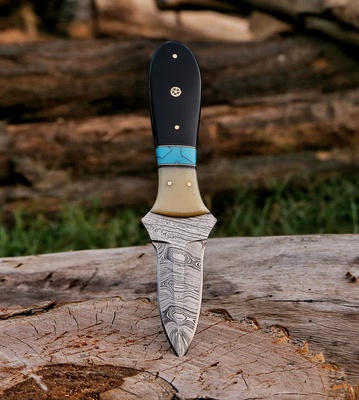
When it comes to selecting the right knife for your needs, the variety of options available can be overwhelming. One of the key decisions to make is choosing between a skinner knife and other types of knives. Each type of knife has its own unique features and is suited for specific tasks. In this article, we will compare skinner knives with other popular knife types to help you determine which one is right for you.
Skinner knife are specifically designed for skinning animals. They feature a curved blade allowing precise cuts along the skin without damaging the meat or hide. The blade design minimizes the risk of puncturing internal organs, making it ideal for hunters and outdoorsmen.
Skinner knives typically have a wide, curved blade that enhances control during skinning. Some skinner knives come with a gut hook, which is useful for opening up the abdomen of game animals without puncturing organs. The handle of a skinner knife is usually designed for a secure grip, ensuring comfort and safety during use.
Hunting knives are versatile tools designed for various tasks in the field, including skinning, butchering, and general utility. While they can be used for skinning, their blade shape is typically not as specialized as that of a skinner knife.
Pros of Hunting Knives:
Cons of Hunting Knives:
Fillet knives are designed for filleting fish and other delicate tasks that require a thin, flexible blade. While they offer excellent precision, they are not ideal for skinning game animals.
Pros of Fillet Knives:
Cons of Fillet Knives:
Utility knives are general-purpose tools that can handle a variety of cutting tasks. They are commonly used for everyday tasks and are not specialized for skinning.
Pros of Utility Knives:
Cons of Utility Knives:
Boning knives are designed for removing bones from meat. They have a narrow, curved blade that allows for precise cuts around bones.
Pros of Boning Knives:
Cons of Boning Knives:
Survival knives are rugged tools designed for survival situations. They are versatile and can handle various tasks, but are not specialized for skinning.
Pros of Survival Knives:
Cons of Survival Knives:
When deciding between a skinner knife and other types of knives, consider the following factors:
Think about the primary tasks you will be performing with the knife. If skinning game animals is your main activity, a skinner knife is the best choice. For more general tasks or specific needs like filleting or deboning, consider a knife that is specialized for those tasks.
Evaluate the blade design and features of each knife type. Look for a blade shape that suits your needs and provides the level of precision and control required for your tasks.
The handle design is crucial for comfort and safety. Choose a knife with an ergonomic handle that fits comfortably in your hand and provides a secure grip.
Consider the durability of the knife and how easy it is to maintain. High-quality materials and construction will ensure that your knife lasts longer and performs better.
If you need a knife for a variety of tasks, a more versatile knife like a hunting or survival knife may be a better choice. However, for specialized tasks, a knife designed specifically for that purpose will provide the best performance.
Choosing the right knife involves understanding the specific tasks you will be performing and selecting a knife that meets those needs. Skinner knives are specialized tools designed for precise skinning tasks, while other types of knives offer versatility and functionality for a range of activities. By considering the features, design, and intended use of each knife type, you can make an informed decision and select the best knife for your needs.
|
|